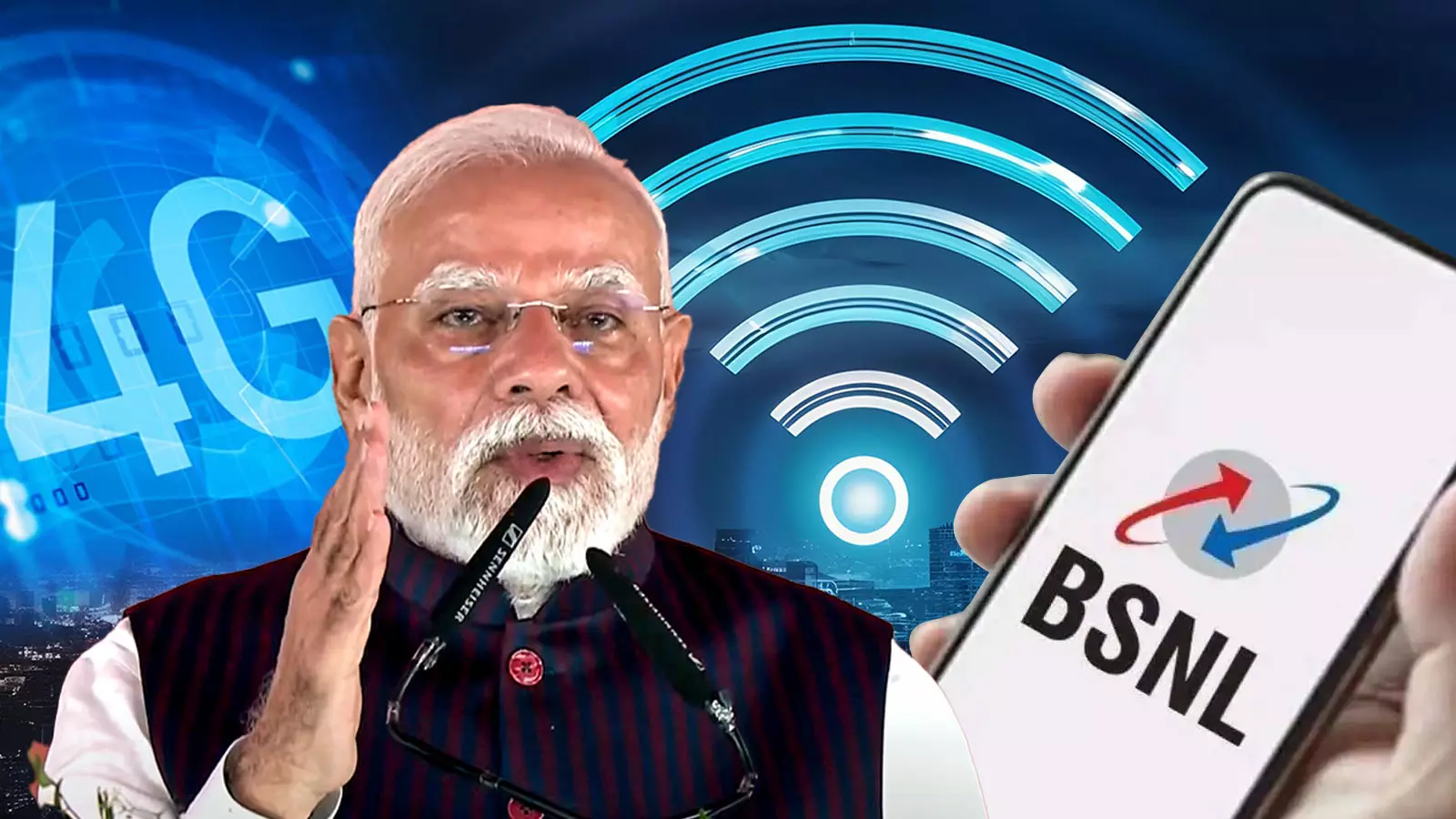
All about BSNL’s ‘swadeshi’ 4G network PM Modi launched in Odisha
The rollout of the indigenous 4G network is a transformative step in bridging the digital divide and empowering rural communities

In a significant boost to India’s telecom infrastructure, Prime Minister Narendra Modi on Saturday (September 27) inaugurated BSNL’s swadeshi (indigenous) 4G stack, placing the country among a select group of nations that manufacture their own telecom equipment.
Also Read: Modi slams Congress for ‘looting’ people, unveils Rs 60,000 cr projects from Odisha
BSNL's homegrown 4G stack
The launch puts India alongside Denmark, Sweden, South Korea and China in developing homegrown telecom technology. The network is reportedly cloud-based, future-ready, and capable of being seamlessly upgraded to 5G.
According to an official statement, the rollout of the swadeshi 4G network is a transformative step in line with the Prime Minister’s Digital India vision, bridging the digital divide and empowering rural communities, while paving the way for BSNL’s 5G upgrade and integration.
More than 26,700 unconnected villages, including 2,472 in Odisha, located in remote, border and left-wing extremism-affected areas, will receive network coverage with this initiative.
Also Read: BSNL back in black after 17 years; posts Q3 profit at Rs 262 cr
Green telecom sites
Marking the silver jubilee of Bharat Sanchar Nigam Limited (BSNL), Modi also commissioned more than 97,500 mobile 4G towers, including 92,600 4G technology sites of the telecom service provider.
These towers have been built at a cost of nearly Rs 37,000 crore with swadeshi (indigenous) technology and are expected to connect around 20 lakh new subscribers.
These towers are solar-powered, making them India’s largest cluster of green telecom sites and a step forward in sustainable infrastructure development while expanding connectivity.
The Prime Minister also unveiled a 100 per cent 4G saturation network through the Digital Bharat Nidhi project, through which 29,000 to 30,000 villages are connected in a mission-mode project.
Officials described the launch as a milestone for expanding digital access and fostering rural empowerment. BSNL expects the expansion to enhance access to mobile services, boost digital participation and communication, particularly for the underserved population in rural India.
Also Read: No signal! How lack of cellular connectivity is giving Arunachal’s people a tough time
Rural empowerment through connectivity
Union Communications Minister Jyotiraditya Scindia emphasised that with the launch of BSNL's indigenous 4G stack, India has become the fifth country in the world to manufacture telecom equipment.
He highlighted that India's image has transformed from being a services and consumer nation to a hub of production, innovation, entrepreneurship and exports.
Scindia said the 4G service will be upgraded to 5G in a few years, while ensuring that the peripheries, as well as terrains difficult to connect so far, are being covered with special thrust.
Left-wing extremist-hit zones, border areas, islands, Jammu and Kashmir, Ladakh and other hilly and remote areas are being connected to ensure hundred per cent saturation, he added.
"From today, farmers will be directly linked with markets, and patients with doctors. Telecom connectivity is a jeevan setu (life bridge). India will lead the world in 5G network connectivity," he asserted.

